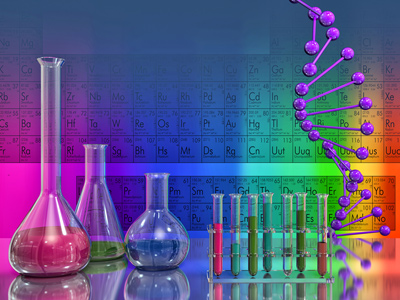

Periodic Table 1
For GCSE Chemistry it is vital that students have a good understanding of the periodic table. In this quiz we take a look at how the periodic table is organised into groups and periods, and also at some of the information we can get about elements from their position in the table.
The ancient Greek philosophers knew very little about science, however, that didn't stop them coming up with ideas to help to explain the world around them. They believed that everything was made from four elements - fire, air, earth and water. It's a long way from our current model of over 100 elements arranged into 8 groups but there are some people who stiill believe this mystical idea! It took 1,000 years before the alchemists of Islam started to carry out experiments systematically. They managed to discover some of the materials that made up the world around them, however, since they were actually looking for a mythical substance that would turn base metals into gold (the Philosopher's Stone), they never actually thought of devising a periodic table. It would have been a very difficult task anyway because some of the substances they discovered were compounds; only a few of them were what we now know are true elements.
Ready for more?
not all...
quizzers. Try to win a coveted spot on our Hall of Fame Page.






